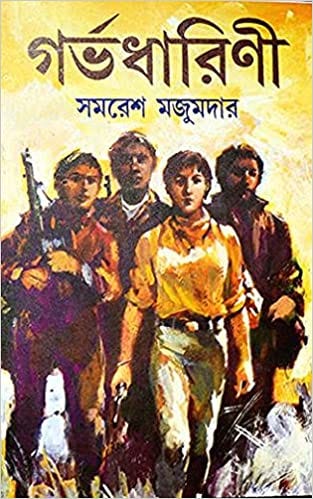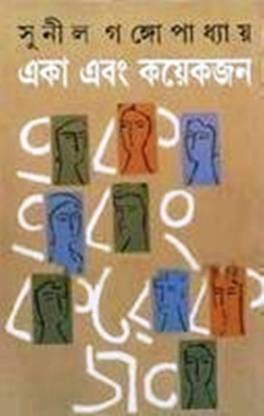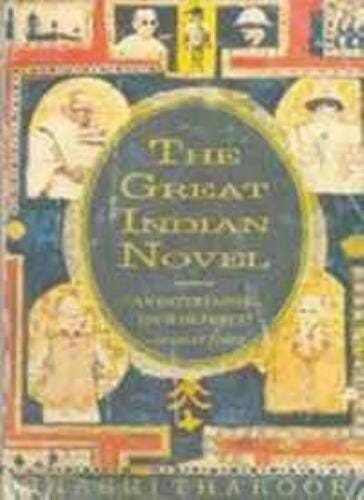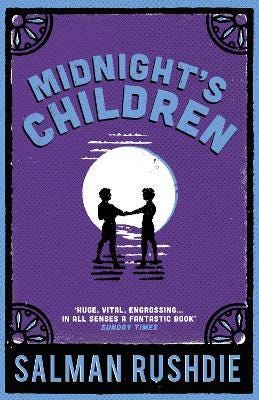It is in the 1920s India where the scene is set, except this is not exactly the India of Gandhi, Congress, constitutional reforms, and so on. This is an uber-racist Raj where the Viceroy tells his minions that a British bullet costs one whole pound sterling and should not be wasted on the natives, whose lives are cheaper and therefore should be ended by means less costly.
One of the protagonists is Bheem, an Adivasi man sent to rescue a little girl who was abducted by the evil Viceroy's even more evil wife, who likes to scream stuff like there is no blood, flog him harder. Bheem hides among Delhi's Muslims as a mechanic, taking on the name Akhter.
The British are alerted to his presence by the Nizam of Hyderabad, and a Desi policeman named Ram volunteers to catch him. This western dressed, Anglicized guy is quite the British boot licker by the day, but is there more to him than meets the eye? The two become friends by chance, without knowing each other's identity. What happens when they find out the truth?
The Telegu film RRR is not just a commercial hit, but also makes into the "2022's best" lists of the Guardian, New Yorker and such like. This genuine global sensation is very much in the Hindu Muslim bhai-bhai tradition of the Bollywood of yore.
The women in this bromance are very much like the women in most Bollywood movies -- pretty much non-existent beyond song and dance and emotional sequence. That said, there is no sexualized item number.
Against this hypermasculinity that un-ironically borders on camp, not only do the Mahabharata and the Ramayana meet in the two protagonists, there is a clear recognition of the nature and the first peoples of the subcontinent that is less trite than the Avatar movies. And the portrayal of Muslims as every bit as Indian as the two heroes is rare in Narendra Modi's India.
Of course, this is not the first globally acclaimed Indian epic set in a heavily fictionalized British India. Over two decades ago, Lagaan was nominated for the best foreign film at the Oscars. In that movie, the cartoonish British villain, a young officer stationed at a small princely state, challenged a group of villagers to a cricket match. If the Englishmen won, the villagers would have to pay three times the normal tax. A victory by the Indians would mean the villagers would be relieved from paying taxes for three years.
The Desis put together a team that included not just a Muslim and a Sikh as well as caste Hindus, but also a Dalit. A nearly four-hour long movie on cricket set in the 1890s India nearly won an Oscar -- yes, reality can sometimes beat imagination! One probably can't make a movie like Lagaan in today's Hindu chauvinist India. At the same time, Lagaan represents an India that was still seen by the world, and itself, as an underdog. This is no longer the case. Must chauvinism accompany self-confidence? Can assertiveness not be decoupled from arrogance?
Lagaan is not the only film where Aamir Khan faced off against the British. But his biopic of Mangal Pandey, the sepoy who fired the first shot against the Company in the 1857 uprising, was inexecrable. And that wasn't as bad as Thugs of Hindostan. Khan is much better at portraying the Indian youth's woes and aspirations over the decades, ranging from Jo Jeeta Wohi Sikander to 3 Idiots by way of Dil Chahta Hai. About that, perhaps some other time.
The relevant movie for this piece is Rang De Basanti, where Khan and his friends are a bunch of apolitical, cynical Delhiwallahs whose life is turned upside down by a British film-maker who wants to dramatize the diary of her grandfather's experience as the jailer of the legendary revolutionary Bhagat Singh and his comrades.
To Bengalis of a certain age from both sides of the border, the dark final act of the mid-2010s' Rang De Basanti is redolent of the first half of Samaresh Majumdar's 1987 novel Garbhadharini. In both the movie and the novel, a group of friends decide to awaken the political consciousness of an apathetic, cynical, self-centred generation through acts of violence directed against those who do the public harm.
Majumdar's heroine was an instant radical icon back then. But upon a re-reading, the novel's denouement that harkens to the mother goddess might in fact be seen as more reactionary than revolutionary.
Majumdar's novel was serialized in the Indian literary magazine Desh in the 1980s, alongside Purba Paschim -- Sunil Gangopadhyay's epic novel set in the 20th century Bengal before and after partition. Gangopadhyay also wrote historical epics Prothom Alo and Shei Shomoy, set in 19th century Bengal. Eka ebong koyekjon is not an epic. Tale of a politically naïve young man giving his prime years to the struggle for freedom, only to find himself unfit for the world when the struggle had formally ended -- this novel deserves to be far better known.
It is, of course, not a surprise that Niaz Zaman chose to write about Purba Paschim in her 1998 book about novels of partition. A Divided Legacy also covers, among others, Bapsi Sidhwa's Cracking India (filmed as Earth, starring Aamir Khan in a negative role) and Qurratulain Hyder's Fireflies in the Mist. It is also not a surprise that the two English novels that bookends the 1980s are the best known of the books she discusses. I speak of Shashi Tharoor's The Great Indian Novel and Salman Rushdie's Midnight's Children.
Tharoor reimagines Mahabharata in the mid-20th century India, from the end of Raj to the tribulation and triumph of democracy. Denied of his rightful place in the royal palace, and therefore joining the antagonist Kauravas in the fight over the throne of Indraprastha, Karna is a great anti-hero in the original epic who is recast as Mohammad Ali Karna, the leader of subcontinent's Muslims, and the founder of Karnistan -- the hacked off land.
Kauravas in Tharoor's version are the party that assumes power in New Delhi when the British leaves, the blind king Dhritarashtra assuming the role of Pundit Nehru, who was apparently blind to inequities and injustices that continued to prevail in free India. In Tharoor's telling, Indira Gandhi is the second coming of Duryodhana -- Dhritarashtra's son and the villain of the epic whose desire for the throne sets off the conflict with the Pandava brothers that end in the bloodbath at Kurukshetra. In the novel, the epic battle is the 1977 election when Indian voters comprehensively rebuffed Mrs Gandhi.
Tharoor writes irreverently, with puns and allusions a-plenty. And yet, he is nowhere near the sophisticated rhetorician intoxicated by the exuberance of his verbosity that is Rushdie. Midnight's Children tells the story of someone born exactly at the stroke of midnight when the world slept and India awoke to a life of freedom. In this fantastic tale, all the children born at that midnight have superpowers, and their lives are entwined with the events that shaped the post-partition subcontinent.
Rushdie appropriated the English language, smashed its literary conventions, and reshaped it into something closer to a Desi heart's desire, in this classic post-colonial exercise of the empire writing back. An example of his literary pyro technique is the Canine Unit for Tracking and Intelligence Activity or CUTIA that is deployed by the Pakistanis in 1971 (say it out loud in a Desi language, and think of the word that you might not want to use in polite company).
The title of this piece is from Rushdie's collection of essays from the 1980s, which itself echoes Benedict Anderson's classic on nationalism titled Imagined Communities. Of course, in the real world that we live in, Rushdie was brutally assaulted by people who had never read a line of his words. Also in the real world, despite depicting the Nehru-Gandhis unflatteringly, Tharoor went on to become a minister the last Congress government of India. And in the real world, Niaz Zaman moved to the then East Pakistan with her non-Bengali family after partition, married a Bengali man, and opted to remain in Bangladesh when her family had moved to Pakistan after 1971.
In the homeland I would like to imagine, a Des(h)i writer would be free to write about all aspects and personalities of our history in any way they choose without fear -- whether poignantly portraying the tragedy of non-heroic figures or lampooning the great and the revered.
That homeland, sadly, is not our reality.
This is the last piece marking the 75th anniversary of the end of the Raj. It was first published in the Dhaka Tribune.
Previous posts in this series:
Further reading
Lata Mangeshkar: 'Why I loved the Indian singer as much as The Beatles'
Rajini Viadyanathan, 7 Feb 2022
On Madhubala, 23 Feb 2022
Hindutva has strong links with fascism – but today’s leaders want to forget them
Ramachandra Guha, 5 Jun 2022
Salman Rushdie is a champion of imagination, ambiguity and liberty
Economist, 15 Aug 2022
It’s Time for Salman Rushdie’s Nobel Prize
David Remnick, 5 Sep 2022
Coriander: The unsung hero of Indian cuisine
Aysha Imtiaz, 4 Nov 2022
Pakistan’s political crisis is also a dilemma for its top brass
Economist, 10 Nov 2022
India's middle class hit by rising cost of living
Archana Shukla, 14 Dec 2022
India’s movement to protect cows is rooted in politics, not religion
Economist, 20 Dec 2022
Ali Aslam, His Chicken Tikka Masala, and the Legacy of South Asian Cuisine in UK
Kalrav Joshi, 23 Dec 2022
Pepper changed the world – but how many people know that?
Anna Sulan Masing, 5 Jan 2023
A sophisticated rhetorecian intoxicated by the exuberance of his verbosity






